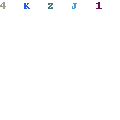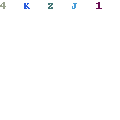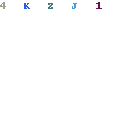How to Set Up ADB and Fastboot with Android SDK on Windows 7 & Windows 8. Android SDK brings with itself the two most important tools needed for tweaking your Android phone, ADB (Android Debug Bridge) and Fastboot. Why do we need them? ADB and fastboot helps us install a custom recovery, which allows us to root our Android devices, install custom ROMs and perform many other system tweaks which are not otherwise possible.
Let’s get on with the tutorial on how to set up ADB and Fastboot for your Android phone so that you never have to go through USB drivers issues again when trying out a custom firmware.
How to Set Up ADB and Fastboot with Android SDK on Windows:
Here are the step-by-step instructions to set up ADB / Fastboot on your computer. Follow the steps carefully and make sure you read the tutorial once before actually performing it.
Required:
- An Android phone. We will be using a Galaxy Nexus.
- microUSB cable
- A computer
Let’s get started with the tutorial:
Step 1 – Download and Install Java Platform (JDK) from Java SE Software Development Kit (SDK) downloads. Once installed, proceed to the next step.
Step 2 – Download Android SDK (android-sdk_r20.0.1-windows.zip) from the Android Developers website. Preferably: Click on Other platforms and download the ZIP package file for Windows.
Step 3 – Extract the zip file anywhere in your computer. We extracted in D: drive. So now we have, D:android-sdk-windows.
Step 4 – Open SDK Manager and wait till it loads (fetches) all the packages.
Step 5 – Now only select two pakcages. Check Android SDK Platform-tools and Google USB Driver options. Uncheck everything else. Then click on the “Install 2 packages…” button.
Step 6 – Confirm the packages that you selected. Select Accept All and click the “Install” button.
Step 7 – Wait till the downloading finishes.
Step 8 – Once you get the following screen, this means all the packages have been successfully installed.
Step 9 – If you again go to the Android SDK folder (D:android-sdk-windows), you will see the following directories now. extras andplatform-tools are the most important ones that we need.
Now that we have all the files, drivers and tools needed. We can proceed on setting up ADB for my Galaxy Nexus. In this part, we will tell you how to use the downloaded USB drivers to set up ADB.
NOTE: USB drivers may be different for other Android phones.
Step 10 – Make sure USB debugging is enabled on your phone. If you don’t know how to enable USB Debugging then follow these steps:
- Go to “Settings” > “Developer Options”, then check “USB Debugging”.
- If you don’t see “Developer Options” in your phone’s settings, then head over to “About” section, scroll down and tap “Build Number” Seven (7) Times. After three taps, you will see a dialogue box that says “You are only four taps away from being a developer”. Tap Four (4) Times more and you’ll have “Developer Options” in your Settings.
Step 11 – Connect your Android phone to the computer and wait till your PC installs all the drivers it could. Most of the drivers would fail to install.
Step 12 – Go to Start -> Control Panel -> System -> Device Manager. In the list, you will see your phone (it should be in “Other Devices”).
Step 13 – Right-click on it, and select Update Driver Software…
Step 14 – Select the second option from the following screen.
Step 15 – Again, select the second option from the next screen.
Step 16 – Select Show All Devices and click Next.
Step 17 – Click the “Have Disk” button. Now browse to D:android-sdk-windowsextrasgoogleusb_driver directory and selectandroid_winusb.inf. Click Open. Then click on OK.
Step 18 – You will be shown a list of Android drivers. Select Android ADB Interface and click Next.
Step 19 – Click Yes to the warning message.
Step 20 – Now wait till driver installation gets over. Click the ‘Install’ button if you see the following warning message.
Step 21 – If you see the following screen now, Congratulations! ADB drivers are now successfully installed on your computer!
Step 22 – Now to verify ADB is working fine, go to the platform-tools directory (D:android-sdk-windowsplatform-tools).
Step 23 – Open Command Prompt. Hold Shift key + right-click anywhere in the folder and select Open command prompt here.
Step 24 – Type “adb devices” (without quotes) in the Command Prompt window and press Enter.
Step 25 – If you see the screen as in the screenshot below, you have successfully set up ADB on your computer for your Android phone.
ADB is now installed and can be used anytime you want to install tweaks or perform ADB commands. We can proceed on setting up Fastboot for my Galaxy Nexus. In this part, we will tell you how to use the downloaded USB drivers to set up Fastboot.
NOTE: Fastboot USB drivers may be different for other Android phones. Bootloader should be unlocked. If you are unsure, Google this up for your phone.
Step 26 – Disconnect your Android phone from the USB cable and turn it OFF.
Step 27 – Go to Bootloader / Fastboot mode now. To do so, Press and hold these buttons together: Volume Up + Volume Down + Power. Hold them till you see the Bootloader / Fastboot mode.
Step 28 – Connect your Android phone to the computer now and wait till your PC installs all the drivers it could.
Step 29 – Then, go to Start -> Control Panel -> System -> Device Manager. In the list, you will see Android 1.0.
Now Repeat the Process from Step 13 to Step 25 once again and you’re done!!





%2B(1).png)
0 comments: